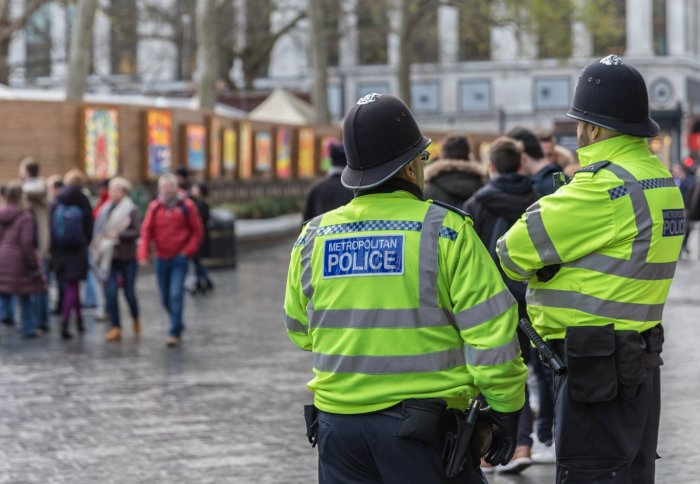Predictive policing research gets a boost from £3m grant

An Imperial mathematician is leading a new five-year program to test and improve predictive policing and tackle other challenges for future cities.
Predictive policing involves using maths and statistics to predict times and places that serious crimes will occur based on historical crime data in a given area, allowing police to efficiently allocate resources.
With more powerful models we can start to predict not just where, but when, and what type of crime is likely to occur.
– Professor Girolami
A trial in Los Angeles was so successful at predicting and preventing crime that UK authorities are investigating its use. Professor Mark Girolami, from the Department of Mathematics at Imperial, is leading a consortium, called Inference, Computation and Numerics for Insights into Cities (ICONIC), that brings together researchers and policing partners. ICONIC has just been given a £3m grant from the EPSRC.
Hayley Dunning spoke to Professor Girolami about improving predictive policing and how the maths used could translate to other aspects of city life in the future.
How has predictive policing been used so far and how can it be improved?
Predictive policing has been used in California to identify crime hotspots where serious crime is more likely to occur. For example, there’s the ‘broken window effect’, where areas of the city that are not looked after are more attractive for certain crimes.
These models are based on crime data and seem to work well, but we can make improvements to provide greater levels of statistical validity of model-based predictions. With more powerful models we can start to predict not just where, but when, and what type of crime is likely to occur.
We also need to quantify the amount of uncertainty in any of these predictions so that police and policymakers can take these into account when deciding whether to allocate resources based on them. Where the uncertainty is high, they might want to rely more on their previous experience and knowledge of the situation.
Who are you working with on this project?
We’re partnering with the Universities of Oxford, Manchester and Strathclyde, along with the Met, West Midlands, Scotland and New York police forces. We also have on board software companies and the Home Office, who are very interested in issues related to crime and security.
Once we have some software to trial, we hope to deploy prototypes. This is why we have a range of collaborating police forces to cover the UK.
These police forces came to us. The police forces across the country are looking at efficiencies in operations, so this work is very important. It’s a great opportunity to do some fantastic maths, but also to roll it out and have impact on UK policing.
It sounds like a great tool, but are there potential pitfalls to predictive policing?
There are certainly ethical issues to take into account. For example, some police forces would like to be able to predict who might become a serial offender, and make an intervention at an early stage to change the path followed. The ethical issues are really huge there – should we even be thinking about such interventions?
The Alan Turing Institute have established a data ethics group, so we’ve set up an initiative with them and West Midlands police to actually look at these particular issues.
There are also cultural differences, for example between the US and the UK, that need to be taken into account when predicting crime. We can’t just be mathematicians working on theorems and proofs. We’ve brought in psychologists and social scientists specifically so that we understand what psychological processes are at play. What we’re hoping to do is have that inform the models that we build.
I guess if we were working in some totalitarian state we wouldn’t be worried about the ethics of using data to profile people as to whether they were going to be serial criminals or not – thankfully we don’t and therefore this is a much more constrained issue, and we really need to embed all of that in the mathematical models we develop.
What else could the tools be used for in future cities?
We aim to focus on crime and policing for the first two years of the grant, but after that we could expand the models’ use to other areas of the city.
For example, we have been approached by a leisure chain that has essentially the same problem as the police force: when do we need more staff and where? With powerful enough models, this could be predicted on an hourly basis.
Models could also be used to assess the local economic impact of new developments in a city, for example Imperial’s new White City campus and its associated infrastructure. We could ask questions about what should go alongside - if a restaurant chain was thinking about opening up an outlet there for example, what size should it be and where should they put it?
Article supporters
Article text (excluding photos or graphics) © Imperial College London.
Photos and graphics subject to third party copyright used with permission or © Imperial College London.
Reporter
Hayley Dunning
Communications Division